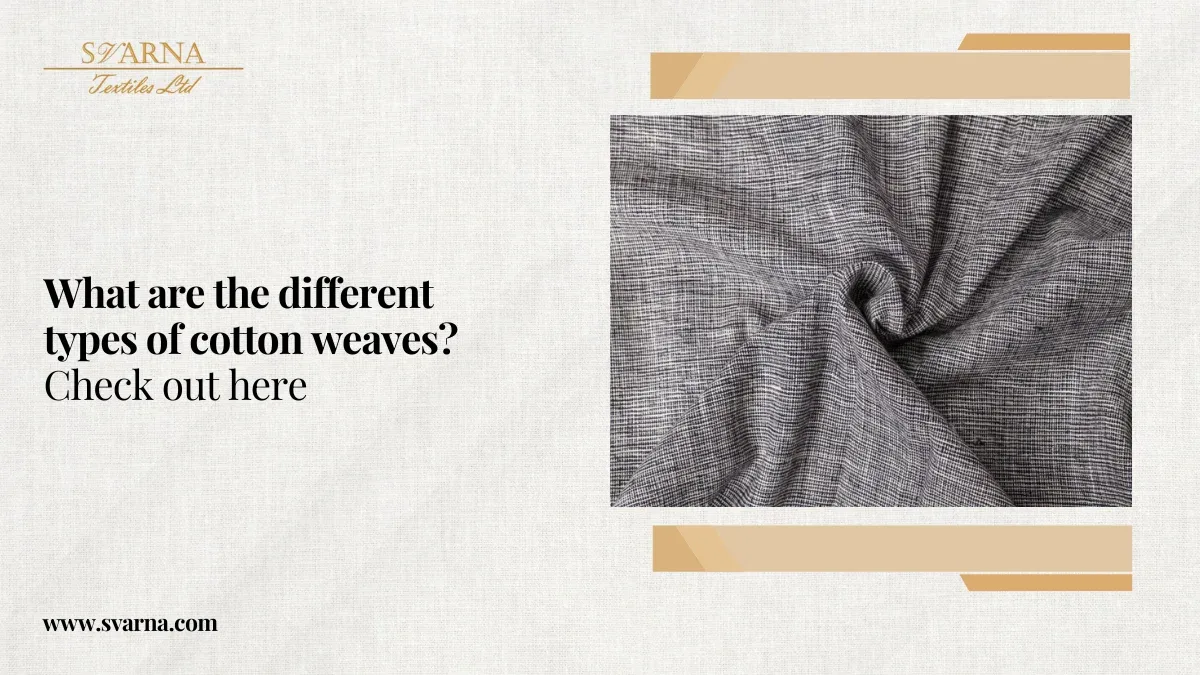Cotton is one of the most popular and versatile textile fabrics used in the world. From the morning towels we use after washing our face to the sheets that we use at night to keep ourselves cozy, cotton fabric plays a huge role in our daily lives. The origin of cotton is debatable but it is widely accepted and considered to have first been domesticated in the Indus Valley civilization around 3000 BC. Over the course, cotton textile, like any other thing has witnessed massive overhaul and transformations. Cotton fabric manufacturers are incessantly coming up with fresh innovative techniques of cotton weaves to bring innovative textures and provide better resilience and breathability to the cotton fabric. Let us delve into the diverse world of cotton weaves and explore its distinct uses and features:
Uncovering Cotton: A walk through the different types of Cotton weaves
Here we discover some of the popular and primary types of cotton weaves used to make cotton fabric for clothing:
Plain Weave:
Also referred to as Tabby weave, this is one of the most common and basic types of weave. The threads are inter-lapped in a criss-cross format, one goes the vertical way and the other passes by horizontally. This is a simple technique yet it is very robust and relatively very smooth. Cotton fabric manufacturers commonly use this pattern for dresses, shirts, bed clothing, casual wear, etc.
Twill weave:
Cotton twill weave is distinguished by its classic diagonal pattern. This pattern beyond the aesthetics also adds durability and the ability to hide or minimize dirt. Twill weave results in the fabric being robust and resilient. Popular pant materials such as jeans, denim, chino, etc. are made using this style of weaving. The fabric is lightly knit making it less breathable but at the same time making it suitable for heavy-duty activities and less prone to wrinkling.
Satin weave:
This style results in a very smooth, flowy, and glamorous fabric. Satin weave is pretty similar to a plain weave but it can be categorized by the complexities of its yarns. Unlike two threads just simply being crisscrossed the weft yarns in the satin weave float over several warp yarns before interlacing. This eventually results in one side having a dull finish. Cotton fabric manufacturers widely use this style to make high-end and luxurious clothing items.
Apart from these primary weaves, variations and speciality weaves such as basket weave, herringbone, and dobby weave add even more multiplicity to the world of cotton fabrics. Basket weave, a variety of the plain weave, comprises interlacing two or more weft threads with an equal number of warp threads, that results in a checkered pattern that is visually appealing and pleasing and at the same time robust. Herringbone, a variation of the twill weave, features a characteristic V-shaped pattern approximating the bones of a herring fish. This weave is generally used in tailored clothing, like suits and blazers, adding a refined and textured appearance. Dobby weave, created on a special loom, incorporates small geometric patterns into the fabric, adding texture and visual interest without compromising the fabric’s functionality. The variety and flexibility of cotton fabric for clothing obtainable through its different weave patterns allow cotton fabric exporters to provide numerous options to global markets and trends. The cotton fabric manufacturers can provide a variety of options to satisfy the customer’s demands.
In conclusion, the beloved cotton fabric for clothing boasts a wide variety of weave patterns; plain, satin, twill, and many more sub-variants. This incredible versatility of cotton as a fabric makes it widely loved and preferred all over the world. Every variety of cotton weave has its unique personality. Every pattern brings its own set of functionalities, characteristics, and aesthetic charms to the table. This empowers the cotton fabric manufacturers to yield textiles that meet a wide array of needs, from luxury items to everyday clothing. Cotton fabric exporters continue to innovate and expand their offerings, ensuring that this timeless material remains a staple in the textile industry worldwide regardless of what the consumers’ preferences and demands have been over the years.
